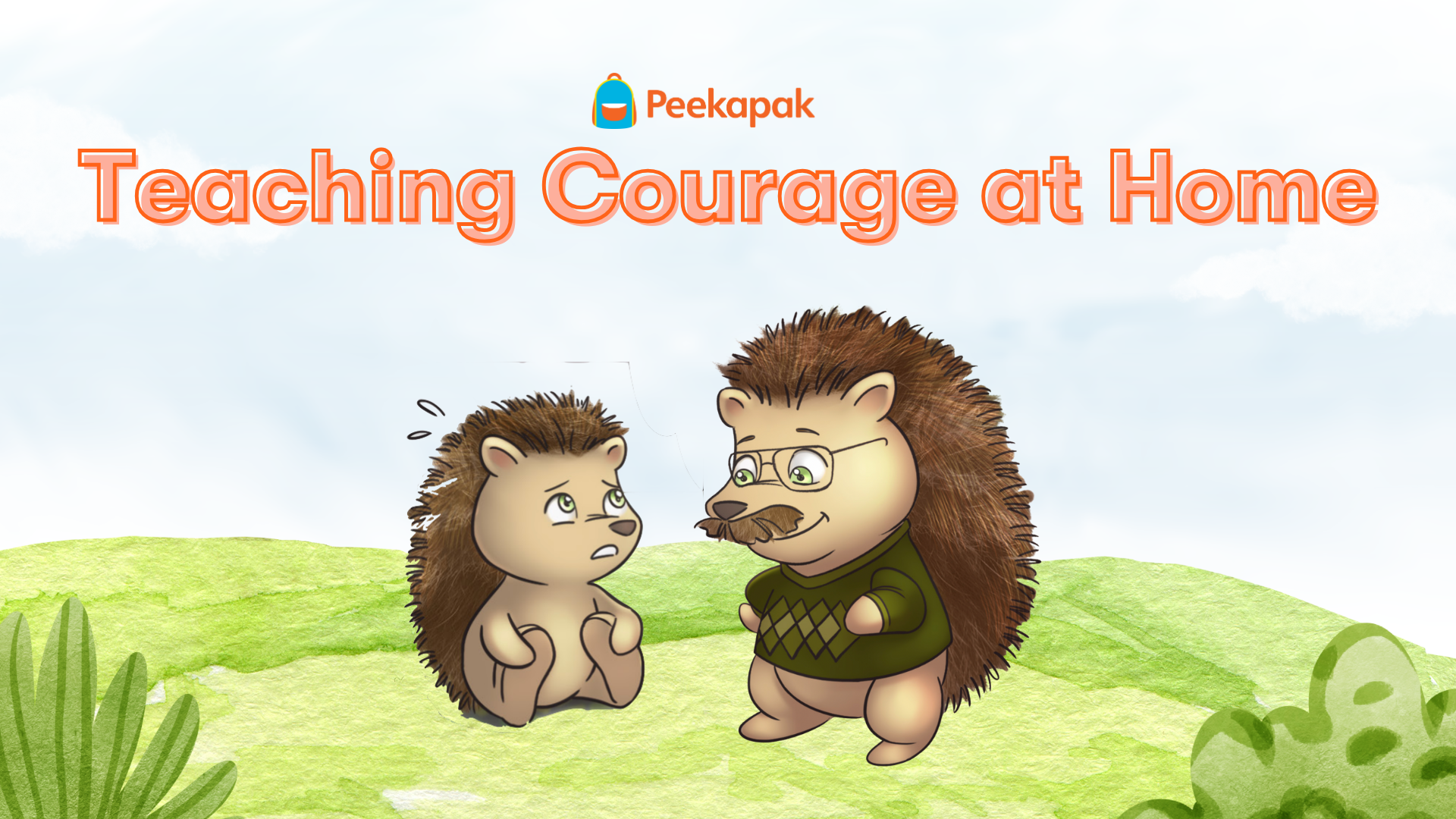When teaching courage at home, it’s important to provide as many opportunities as possible for children to see courage being modeled in everyday situations. Children need to learn that acts of courage can be big or small, and can be demonstrated by anyone. More importantly, they need to learn that you don’t need to be a superhero to show courage.
Courage, as explained by researcher Brene Brown in her book Rising Strong, happens when we bounce back from failures and feelings of shame or guilt, and face things head on (Brown, 2015). This may mean being brave enough to stand up for what we believe is right even if our friends disagree, or doing things that most view as difficult.
Here are a few easy ways to help your child learn about courage:
1. Acknowledge your child’s feelings.
Children may not feel comfortable confronting the feeling of fear. Let them know that feeling afraid is okay and that we all experience it from time to time. When trying to confront a fear, help your child make a list of their feelings before and after they face their fear.
💬 Take away message: By knowing what we fear, and accepting that it’s okay to be afraid, we can start to find solutions to overcome this feeling.
✏️ Tip: Use books about courage to support your discussions. Read a free digital story about courage with your child by signing up or logging into www.peekapak.com.
2. Help your child think about different ways to show courage.
Courage manifests in different forms. Work with your child to sort through actions that are typically associated with courage. For example, think about someone who climbs a mountain and someone who admits to not always knowing the answers. Both individuals show courage, but in their own way and in response to a different situation.
💬 Take away message: Courage can be shown in many different ways. Teach your child that there’s no “one way” to show courage.
✏️ Tip: At dinnertime, go around the table and have each family member describe a way they showed courage that day or week.
3. Teach your child to use language that supports courage.
Children learn from what they see and hear. It’s important to show that being vulnerable is valuable (and respectable). For example, when we need help, we show courage by asking for help. When we feel scared, we say we are feeling scared even if we worry that others may judge us.
💬 Take away message: Help your child understand that asking for help and admitting when they are afraid is normal, healthy and encouraged.
✏️ Tip: Practice talking about what your child is afraid of by using these sentence starters: “I am afraid of …”, “… scares me”, “I need help to …”
Observe examples of courage with your child.
Acts of courage are not limited to superheroes we see on TV. Everyday heroes can be people like police officers and firefighters, teachers and parents, and children themselves! Courage can be seen in different ways, everywhere!
💬 Take away message: Help your child see that acts of courage and everyday heroes exist everywhere they look.
✏️ Tip: Interview friends, family and local community members to see how they define and exhibit courage, or search through the newspaper and highlight examples of courage.
We hope these tips will inspire you to get the conversation about courage started at home.






